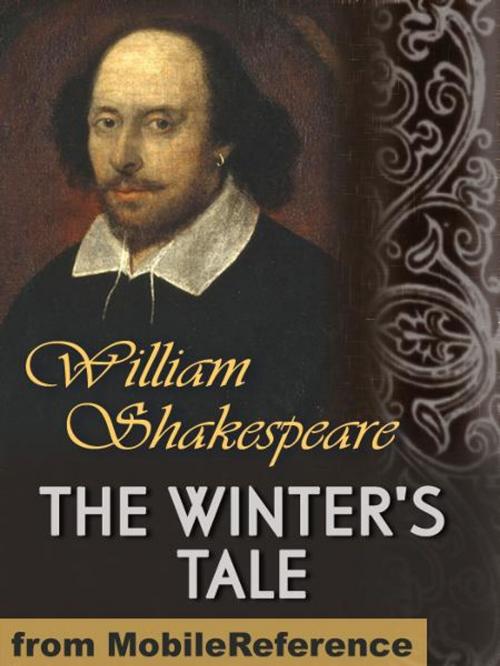The Winter's Tale (Mobi Classics)
Nonfiction, Entertainment, Drama, Shakespeare, Fiction & Literature, Classics| Author: | William Shakespeare | ISBN: | 9781605015897 |
| Publisher: | MobileReference | Publication: | January 1, 2010 |
| Imprint: | MobileReference | Language: | English |
| Author: | William Shakespeare |
| ISBN: | 9781605015897 |
| Publisher: | MobileReference |
| Publication: | January 1, 2010 |
| Imprint: | MobileReference |
| Language: | English |
The Winter's Tale is a play by William Shakespeare, first published in the First Folio in 1623. Although it was listed as a comedy when it first appeared, some modern editors have relabeled the play a romance. Some critics, among them W. W. Lawrence (Lawrence, 9-13), consider it to be one of Shakespeare's "problem plays", because the first three acts are filled with intense psychological drama, while the last two acts are comedic and supply a happy ending.Nevertheless, the play has occasionally been extremely popular, and enjoyed theatrical productions in various forms and adaptations by some of the leading theatre practitioners in Shakespeare performance history, beginning with David Garrick in his adaptation called Florizel and Perdita (first performed in 1784 and published in 1756), and again in the nineteenth century, when the third "pastoral" act was widely popular. In the second half of the twentieth century The Winter's Tale, in its entirety and drawn largely from the First Folio text, was often performed, with varying degrees of success, for the first time since it was first performed in London in 1611.The play contains the most famous Shakespearean stage direction: Exit, pursued by a bear, describing the death of Antigonus. It is not known whether Shakespeare used a real bear from the London bear-pits, or an actor in bear costume. The Royal Shakespeare Company, in one production of this play, used a large sheet of silk which moved and created shapes, to symbolise both the bear and the gale in which Antigonus is travelling. Excerpted from Wikipedia, the free encyclopedia.
The Winter's Tale is a play by William Shakespeare, first published in the First Folio in 1623. Although it was listed as a comedy when it first appeared, some modern editors have relabeled the play a romance. Some critics, among them W. W. Lawrence (Lawrence, 9-13), consider it to be one of Shakespeare's "problem plays", because the first three acts are filled with intense psychological drama, while the last two acts are comedic and supply a happy ending.Nevertheless, the play has occasionally been extremely popular, and enjoyed theatrical productions in various forms and adaptations by some of the leading theatre practitioners in Shakespeare performance history, beginning with David Garrick in his adaptation called Florizel and Perdita (first performed in 1784 and published in 1756), and again in the nineteenth century, when the third "pastoral" act was widely popular. In the second half of the twentieth century The Winter's Tale, in its entirety and drawn largely from the First Folio text, was often performed, with varying degrees of success, for the first time since it was first performed in London in 1611.The play contains the most famous Shakespearean stage direction: Exit, pursued by a bear, describing the death of Antigonus. It is not known whether Shakespeare used a real bear from the London bear-pits, or an actor in bear costume. The Royal Shakespeare Company, in one production of this play, used a large sheet of silk which moved and created shapes, to symbolise both the bear and the gale in which Antigonus is travelling. Excerpted from Wikipedia, the free encyclopedia.















